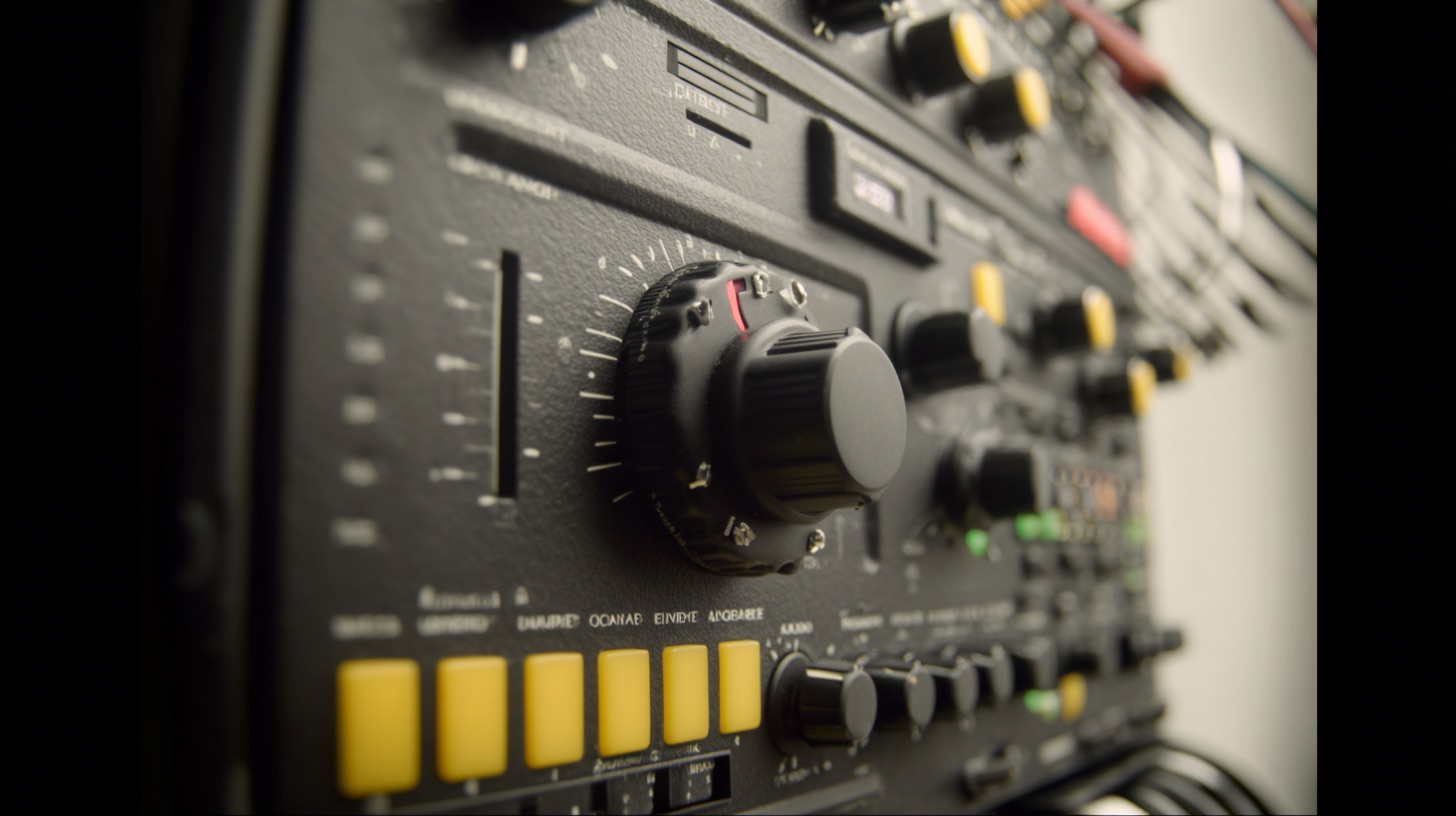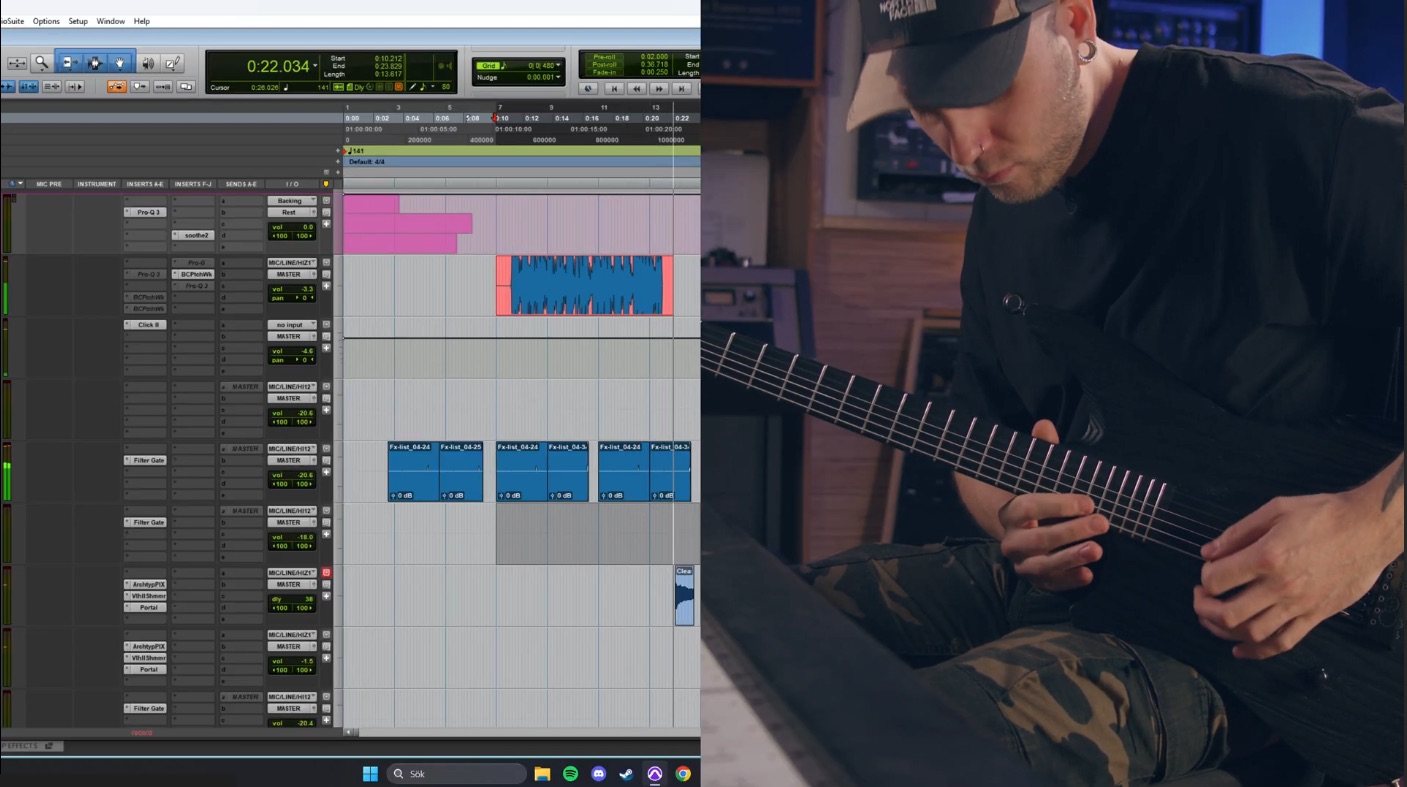
iLok Explained: Why Your Metal Plugins Use It (And How To Deal)
Nail The Mix Staff
The iLok. Love it, hate it, or just begrudgingly accept it, PACE's iLok system is a fixture in the world of pro audio software, especially for those high-end plugins that carve out killer metal tones. If you’ve ever wondered why so many top-tier plugins – the ones you need for your mixes – rely on this little blue dongle (or its cloud/machine-based counterparts), you’re in the right place.
We’re not here to sell you on iLok, but let’s be real: it’s a gatekeeper for a lot of the tools serious metal producers use daily. So, instead of just cursing its name when License Manager throws a fit, let’s break down what it is, why it’s used, how it stacks up against other methods, and most importantly, how to make it work for you in your metal production workflow.
WTF is iLok Anyway? The Lowdown on Your Licenses
At its core, iLok is an anti-piracy and license management system developed by PACE Anti-Piracy. Plugin developers use it to protect their software from being copied and used illegally. When you buy a plugin that uses iLok, you're essentially getting a license, and the iLok system is how you prove you own it.
You interact with it primarily through the iLok License Manager software. This is where you activate, deactivate, and transfer your licenses. There are three main ways your licenses can live:
H3: The Classic Dongle: Your Physical Key
This is what most people picture when they hear "iLok." It's a USB device (now available in USB-A and USB-C versions) that stores your plugin licenses.
- Pros:
- Portability: Take your licenses to any studio, any rig, just by plugging in the dongle. Super handy if you’re session hopping or collaborating in person.
- Offline Use: Once your licenses are on the dongle, you don’t need an internet connection to use your plugins. Crucial for studios with dodgy Wi-Fi or if you’re working on the road.
- Cons:
- Physical Thing: It can be lost, stolen, or broken. A snapped iLok right before a deadline is pure pain.
- USB Port Hog: Takes up a valuable USB slot. If you're on a laptop, that can be a big deal.
- Cost: You gotta buy the dongle itself (usually around $50).
H3: iLok Cloud: Licenses in the Ether
This method allows you to activate your licenses to a "Cloud Session" that requires an active internet connection.
- Pros:
- No Dongle Needed: Frees up a USB port and means one less thing to carry or lose.
- Access Anywhere (with internet): Log into your iLok account, open a Cloud Session, and your plugins are authorized.
- Cons:
- Constant Internet Required: If your internet drops, your Cloud Session closes, and your plugins will stop working. Not ideal for tracking a fussy vocalist or during a critical mix moment.
- One Active Session: You can only have one Cloud Session open at a time. So, no running your iLok Cloud plugins on your studio desktop and your laptop simultaneously.
H3: Machine Activation: Tied to Your Rig
Some developers allow you to activate licenses directly to your computer (your "machine").
- Pros:
- No Dongle Needed: Like Cloud, but without the constant internet requirement (once activated).
- Offline Use: Works offline after the initial activation.
- Cons:
- Less Portable: Licenses are tied to that specific computer. Moving to a new machine means deactivating from the old one and reactivating on the new one.
- Limited Activations: Developers usually limit the number of machines you can activate a license on simultaneously (often one or two).
Why Your Go-To Metal Plugins Demand an iLok
So why do companies like Avid (Pro Tools), Soundtoys, Softube, and Antares put you through the iLok hoops? It’s not a personal vendetta, promise.
- Anti-Piracy: This is the big one. Software development is expensive, especially for the complex plugins that sculpt those brutal guitar tones or pristine vocal chains. iLok is one of the more robust ways for them to protect their intellectual property and ensure they get paid for their work.
- Centralized Management (for Devs): For plugin developers, integrating with iLok can be easier and more cost-effective than building, maintaining, and supporting their own custom licensing system.
- Industry Standard: Because so many major players adopted it, it became a sort of de facto standard, especially for higher-priced, professional-grade software. If you want those tools, you often play by their rules.
Think about it: the processing power in plugins like Soundtoys Decapitator for adding that perfect harmonic grit to a snare, or the surgical precision of McDSP FilterBank for taming harsh frequencies in a high-gain guitar (check out more on that in our EQ Strategies for Mixing Modern Metal guide), represents significant R&D. iLok helps them protect that.
iLok vs. The Rest: How Does It Stack Up?
iLok isn't the only game in town for plugin activation. Here’s a quick look at how it compares to other common methods:
H3: Old School Serial Numbers: Simple, But…
You type in a code, and you’re (hopefully) good to go.
- Pros: Super simple, no extra software usually needed.
- Cons: Easy to lose your serial, a pain to manage for many plugins, and trivially easy to pirate. Often tied to one machine install.
H3: Challenge/Response: The Digital Handshake
You install the plugin, it gives you a "challenge" code. You go to the developer's website, enter that code along with your serial, and get a "response" code to unlock the plugin.
- Pros: More secure than plain serials.
- Cons: Can be clunky, often machine-specific. A major hardware change (like a new motherboard) can invalidate your activation, leading to support tickets.
H3: Proprietary License Managers (Waves Central, Native Access, Arturia Software Center, etc.)
Many companies have their own dedicated software to manage licenses.
- Pros: Often a slicker user experience, tailored to that company's products. Can offer easy updates and installations.
- Cons: Yet another piece of software to install and keep updated for each vendor. Some can be resource-heavy or require online check-ins.
H3: Subscription & Online Check-ins (Plugin Alliance, Slate Digital All Access)
Pay a monthly or annual fee for access to a bundle of plugins.
- Pros: Access to a huge range of tools for a relatively low recurring cost.
- Cons: You need an internet connection (at least periodically for validation). If you stop paying, you lose access to the plugins. Interestingly, some of these services might still use iLok technology under the hood for some of their licenses or offer iLok dongle authorization as an option.
iLok’s main selling point, despite its quirks, is its robust security and (with a dongle) true offline portability across different systems.
Making iLok Your Friend (Not Your Enemy) in the Studio
Okay, "friend" might be a strong word, but you can definitely minimize the headaches. Here’s how to make iLok less of a pain for your metal productions:
H3: The Dongle Life: Studio Hopping and Offline Gigs
If you’re regularly moving between your home rig, a commercial studio, or even using plugins for live backing tracks, the iLok dongle is your most reliable bet.
- Pro Tip: Get a decent, powered USB hub, especially if you have other dongles (e.g., eLicenser). Label your iLok clearly. And for the love of all that is heavy, don't leave it sticking out of a laptop precariously!
H3: iLok Cloud: For the Always-Online Producer?
If your studio machine has a rock-solid, always-on internet connection, iLok Cloud can be a good dongle-free option.
- Heads Up: If your internet even hiccups, your plugins can de-authorize. For critical tracking or mixing sessions where stability is paramount, this might be a gamble. Always remember to "Close Cloud Session" in iLok License Manager when you're done, or you won't be able to open one on another machine.
H3: Machine Activation: Set It and Forget It (Mostly)
For a dedicated studio computer that doesn’t move, machine-based activation is convenient.
- Keep Track: Know which licenses are on which machine. If you reformat your drive or sell your computer, deactivate your licenses first! Otherwise, you’ll be contacting support for each plugin vendor.
H3: Protecting Your Investment: ZDT and TLC
PACE offers Zero Downtime (ZDT) coverage as an optional add-on to your iLok dongle. If your covered dongle is lost, stolen, or broken, they’ll deposit temporary licenses into your account while you sort out a replacement. Theft & Loss Coverage (TLC) must be enabled before something happens.
- Is it worth it? If your livelihood depends on iLok-protected plugins, ZDT is a strong consideration. It’s like insurance for your licenses. There's an annual fee, and you need a newish iLok (2nd gen or newer).
Must-Have iLok Plugins for Crushing Metal Tones
A lot of the industry-standard tools that define modern metal sounds are iLok protected. Here are a few examples you'll frequently see in pro metal mix sessions:
- Avid Pro Tools: The DAW of choice for countless metal albums. Its editing workflow, particularly for drums and guitars, is legendary.
- Soundtoys Suite:
- Decapitator: Awesome for adding saturation and aggression to drums, bass, vocals, or even the mix bus.
- EchoBoy: Versatile delay that can go from tight slapbacks to epic, spacious repeats on vocals and guitars.
- Little AlterBoy: Great for vocal effects, from subtle pitch correction to demonic formant shifting.
- Antares Auto-Tune Pro: Yes, even in metal. Essential for tight, modern vocal performances, whether used for transparent correction or as a more noticeable effect.
- McDSP Plugins:
- FilterBank: A highly versatile EQ, brilliant for surgical cuts to remove guitar fizz or low-end mud.
- CompressorBank: A flexible suite of compressors that can handle anything from gentle leveling to aggressive smashing. Perfect for parallel drum compression. (Speaking of which, dive deeper into Metal Compression Secrets Beyond Just Making It Loud for more on that).
- Softube Plugins:
- Weiss DS1-MK3 / Gambit Series: High-end mastering-grade dynamics and EQ.
- Chandler Limited Germanium Compressor / Zener Limiter: Fantastic character compressors for adding weight and vibe to drum busses or individual tracks.
- Tube-Tech CL 1B: A go-to optical compressor for smooth, rich vocal compression.
- Eventide Effects:
- H3000 Factory / H9 Series: Iconic multi-effects processors, known for their lush reverbs, creative delays, and unique pitch-shifting.
- Blackhole: For massive, otherworldly reverbs that can add incredible depth to ambient sections or vocal effects.
- Relab Development LX480: A spot-on emulation of the legendary Lexicon 480L reverb. Perfect for adding that classic, polished space to your mixes without cluttering them up.
These are just a handful, but they represent the kind of powerful tools that often come with iLok protection.

100+ Insanely Detailed Mixing Tutorials
We leave absolutely nothing out, showing you every single step
So, iLok: Deal With It and Make Sick Mixes
Look, iLok is here to stay, at least for the foreseeable future, for a big chunk of the pro audio world. It has its frustrations, no doubt. But understanding how it works and managing your licenses effectively means you can spend less time troubleshooting and more time actually dialing in those face-melting guitar tones, punchy drums, and aggressive vocals.
The plugins it protects are often the keys to unlocking a professional sound. It’s one thing to know what an iLok is and which plugins use it. It’s another to see those plugins pushed to their absolute limits by the producers who mixed your favorite metal albums. Want to see exactly how the pros dial in their iLok-protected (and other) tools for chart-topping metal? That's what Nail The Mix is all about. Every month, we bring you inside real sessions with world-class producers, showing you every move.
If you’re ready to go beyond just owning the plugins and truly master them, check out how you can Unlock Your Sound: Mixing Modern Metal Beyond Presets with Nail The Mix.
Get a new set of multi-tracks every month from a world-class artist, a livestream with the producer who mixed it, 100+ tutorials, our exclusive plugins and more
Get Started for $1




